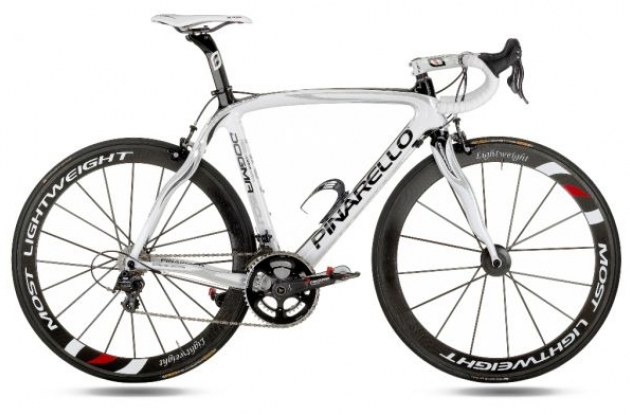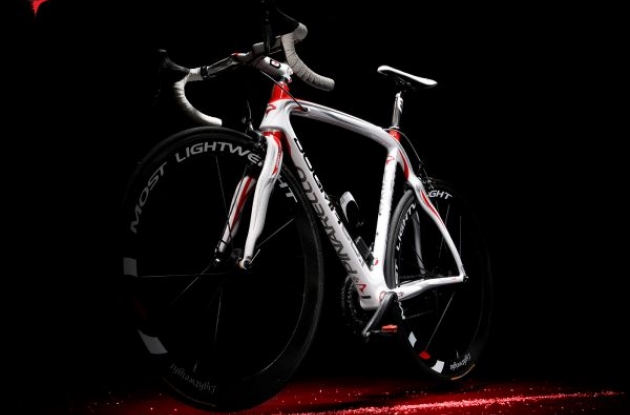First Look at the Pinarello Dogma 60.1
Ladies and gentlemen, please welcome the Pinarello Dogma 60.1.
During his participation in the 2009 Tour of Burgos Caisse d’Epargne rider Alejandro Valverde had the opportunity to test a new Pinarello bike that he is hoping will contribute to his success in the coming 2009 Vuelta a Espana – the 2009 Tour of Spain. Ladies and gentlemen, please welcome the Pinarello Dogma 60.1
The Pinarello Dogma 60.1 is a bike which external asymmetry according to Pinarello representatives produces a perfect equilibrium that will result in a revolution in the cycling world in 2010.
The Dogma 60.1 is the child of the large success of the famous Pinarello Prince, which Alejandro Valverde has been using until this point in his successful career. Its technological development reaches the boundaries of technology, with a series of innovations that emerged as the result of a total change in thought in regards to the distribution of weight and force on the frame.
Dogma 60.1 is the first pro road bike in the world to introduce the asymmetry concept which addresses the need to balance the asymmetric forces that are diffused upon the entire frame as a result of the cassette cluster and the chain being positioned on the right side of the bike, this creating an unavoidable imbalance.
With this in mind the Dogma “marks a total redistribution of equilibrium within the frame,” according to Pinarelllo. Thanks to virtual simulation, Pinarello technicians have re-equilibrated the bike via careful adjustments to the frame thickness. The most noticeable modifications can be seen in the shape of the anterior fork (the right one being thicker and more angled), the top tube, and lastly the chain stay (the right side is thinner at the front end, near the bottom bracket and then larger towards the rear. Conversely the left chain stay is reinforced at the front end, becoming thinner towards the rear).
The Dogma deploys the new EPS system (Expandable Polystyrene System), which reduces the risk of breakage of the bike frame. The increase in rigidity applies to the most critical points of the frame: the anterior area, thereby resulting in better bike handling and control (fundamental for descents and nervous courses – just ask Amstel Gold Race riders) and in the area around the bottom bracket, this leading to less force dispersion and better acceleration when attacking and climbing.
Visit Pinarello online at www.pinarello.com.
Shopping from the US? Click here![]() to buy Pinarello bikes online.
to buy Pinarello bikes online.
Help us make Roadcycling.com even better: A great way to support us here at Roadcycling.com is to sign up for the premium subscription version of our cycling training diary service used by many pro cyclists.









